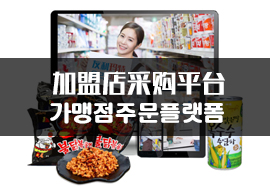
网站公告
more- Why End Virt... 25-05-03 10:39
- Lotus365 Bet... 25-05-03 10:06
- Lotus365 Bet... 25-05-03 10:04
- Lotus365 Bet... 25-05-03 05:19
Swanson Ultra Apigenin 50 Mg 90 Caps
WilliamNovak305 2025.05.02 07:37 查看 : 13
If the material is covered by more than one CLH access (e.g. disodium tetraborate EC no. 215-540-4, is covered by 3 harmonisations: & colon; 005-011-00-4; 005-011-01-1 and 005-011-02-9), CLH details can not be shown in the InfoCard as the difference between the CLH classifications requires manual analysis or confirmation.
One of the major objectives of NMN supplements is to enhance NAD+ levels in the body. Keep in mind that for readability functions, just the pictograms, signal words and danger statements referred in more than 5% of the notifications under CLP are shown. This details is only displayed if the material is well-defined, its identification is not asserted confidential and there is sufficient information readily available in ECHA's data sources for ECHA's algorithms to produce a molecular framework.
By dealing with several trademarks of aging and supporting the core pillars of health, apigenin becomes an effective substance for those aiming to enhance their wellness and durability. how does apigenin work: An effective bioflavonoid substance discovered in chamomile, recognized for its ability to support relaxation and increase NAD+.
Harmonised classification and labelling is a legitimately binding category and labelling for a substance, concurred at European Neighborhood degree. The CLP Law uses the UN Global Harmonised System (GHS) and European Union Specific Hazard Declarations (EUH). Many health foods have trace quantities of this promising molecule.
The 'Risk classification and labelling' area shows the risks of a material based upon the standardised system of pictograms and statements established under the CLP (Category Labelling and Product Packaging) Guideline. This area is based upon three resources for information (harmonised classification and labelling (CLH), get to enrollments and CLP notifications).
One of the major objectives of NMN supplements is to enhance NAD+ levels in the body. Keep in mind that for readability functions, just the pictograms, signal words and danger statements referred in more than 5% of the notifications under CLP are shown. This details is only displayed if the material is well-defined, its identification is not asserted confidential and there is sufficient information readily available in ECHA's data sources for ECHA's algorithms to produce a molecular framework.
By dealing with several trademarks of aging and supporting the core pillars of health, apigenin becomes an effective substance for those aiming to enhance their wellness and durability. how does apigenin work: An effective bioflavonoid substance discovered in chamomile, recognized for its ability to support relaxation and increase NAD+.
Harmonised classification and labelling is a legitimately binding category and labelling for a substance, concurred at European Neighborhood degree. The CLP Law uses the UN Global Harmonised System (GHS) and European Union Specific Hazard Declarations (EUH). Many health foods have trace quantities of this promising molecule.
The 'Risk classification and labelling' area shows the risks of a material based upon the standardised system of pictograms and statements established under the CLP (Category Labelling and Product Packaging) Guideline. This area is based upon three resources for information (harmonised classification and labelling (CLH), get to enrollments and CLP notifications).
?? 0
Copyright © youlimart.com All Rights Reserved.鲁ICP备18045292号-2 鲁公网安备 37021402000770号

